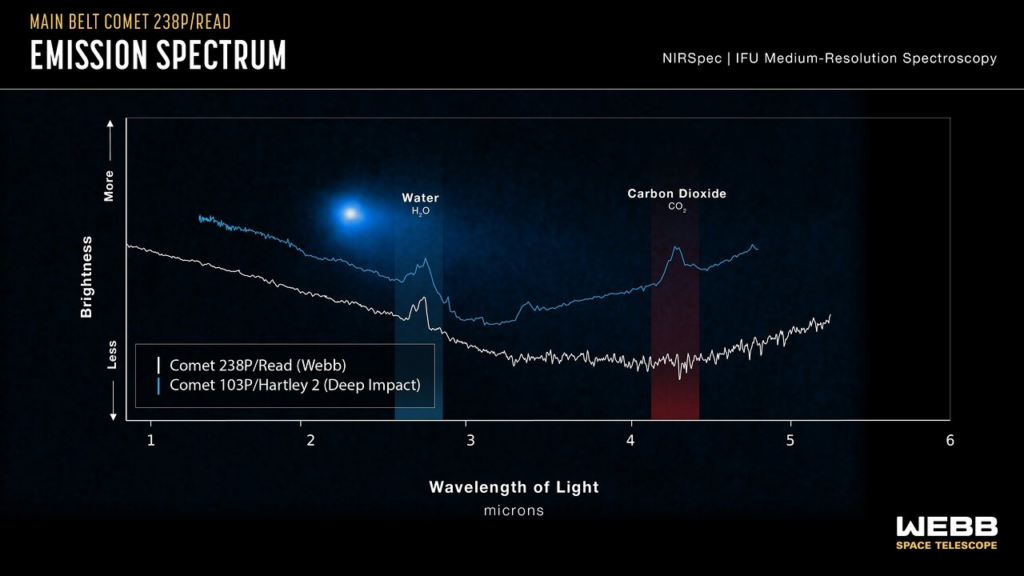NASA’s James Webb Space Telescope found a rare main belt comet’s water vapor signal for the first time. This month’s Nature article explains Earth’s plentiful water and for the first time finds water from the early solar system between Mars and Jupiter.
“Our water-soaked world, teeming with life and unique in the universe as far as we know, is something of a mystery – we’re not sure how all this water got here,” study coauthor Stefanie Milam, Webb deputy project scientist for planetary science, said in a press statement.
“Understanding the history of water distribution in the solar system will help us understand other planetary systems and whether they could host an Earth-like planet,” she said.

Water Vapor in Rare Main Belt Comet Found by NASA’s Webb Telescope
Study coauthor Henry Hsieh, a comet researcher from the Planetary Science Institute in Hawaii, told SpaceRef that the discovery is a mystery. Comet 238P/Read, studied, has no carbon dioxide.
Hsieh says outer solar system comets include volatile ices including water, carbon dioxide, carbon monoxide, and more complicated compounds. At certain temperatures, comet ices sublimate to gas. Scientists believe comets mirror the solar system’s circumstances. A comet with carbon dioxide ice must have originated in a sector of the early solar system distant enough from the sun. Most comets need the most heat to sublimate water from ice to gas. CO2 and carbon monoxide bake quicker.
“Given these considerations, the lack of CO2 in Comet 238P suggests that it formed in a part of the early solar system where no CO2 ice was present, meaning that it probably formed much closer to the Sun than other comets,” said Hsieh.

Since it was in the warmer inner solar system longer than previous comets
“Even though I and my collaborators over the years collected a substantial body of indirect evidence that water sublimation was the likely cause of main-belt comet activity, the question of whether there was any direct, concrete spectroscopic evidence of water outgassing would continually come up, and so it is personally exciting to me to finally have an answer to this question I’ve been asking over all these years,” Hsieh said.
The James Webb Space Telescope is better for this type of study than terrestrial observatories. Hsieh says Earth-based detection of comet water is difficult. The terrestrial atmosphere is mostly water vapor, making comet outgassing detection difficult. Astronomers seek for additional gases like cyanide. Gas and water are often found in outer solar system comets.
If outer and inner solar system comets have different quantities of cyanide gas, water, and carbon dioxide, this method fails.
“In the past, we’ve seen objects in the main belt with all the characteristics of comets, but only with this precise spectral data from Webb can we say yes, it’s definitely water ice that is creating that effect,” University of Maryland astronomer Michael Kelley, who led the research team, said in a NASA press release.
Kelley said, “Webb’s observations of Comet Read show that water ice from the early solar system can be preserved in the asteroid belt.
According to NASA, research coauthor Heidi Hammel, an AURA astronomer, will compare Comet Read to other main belt comets. She leads Webb’s Guaranteed Time Observations of solar system objects.
Webb can finally reveal the asteroid belt’s dim and tiny objects. Do other main belt comets lack CO2? “It will be exciting either way,” Hammel added.
